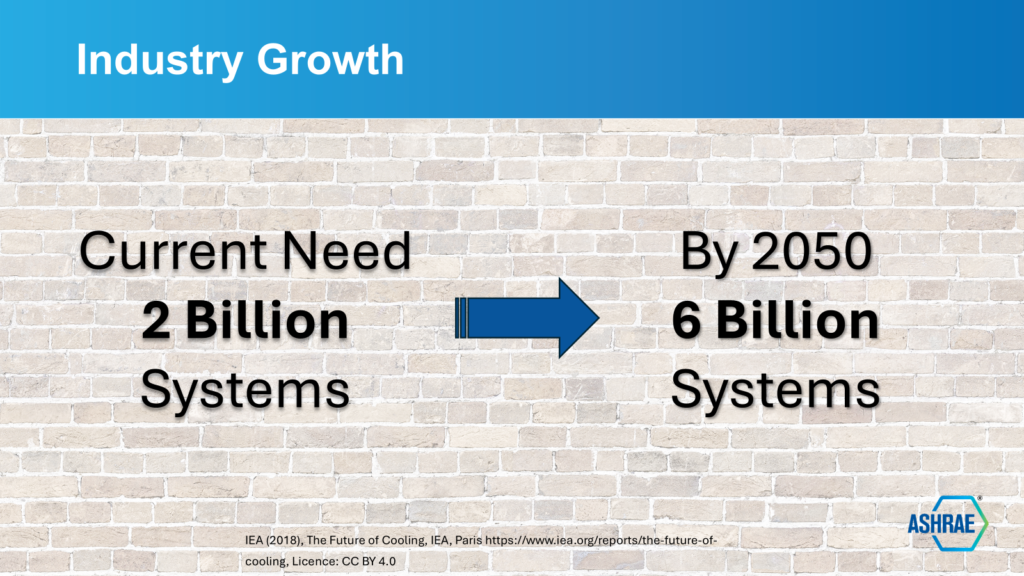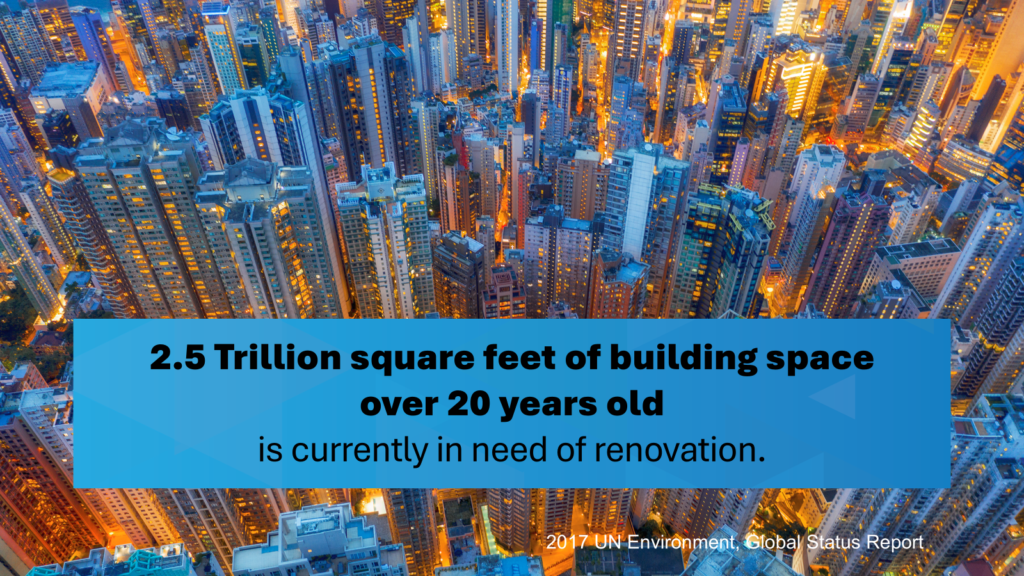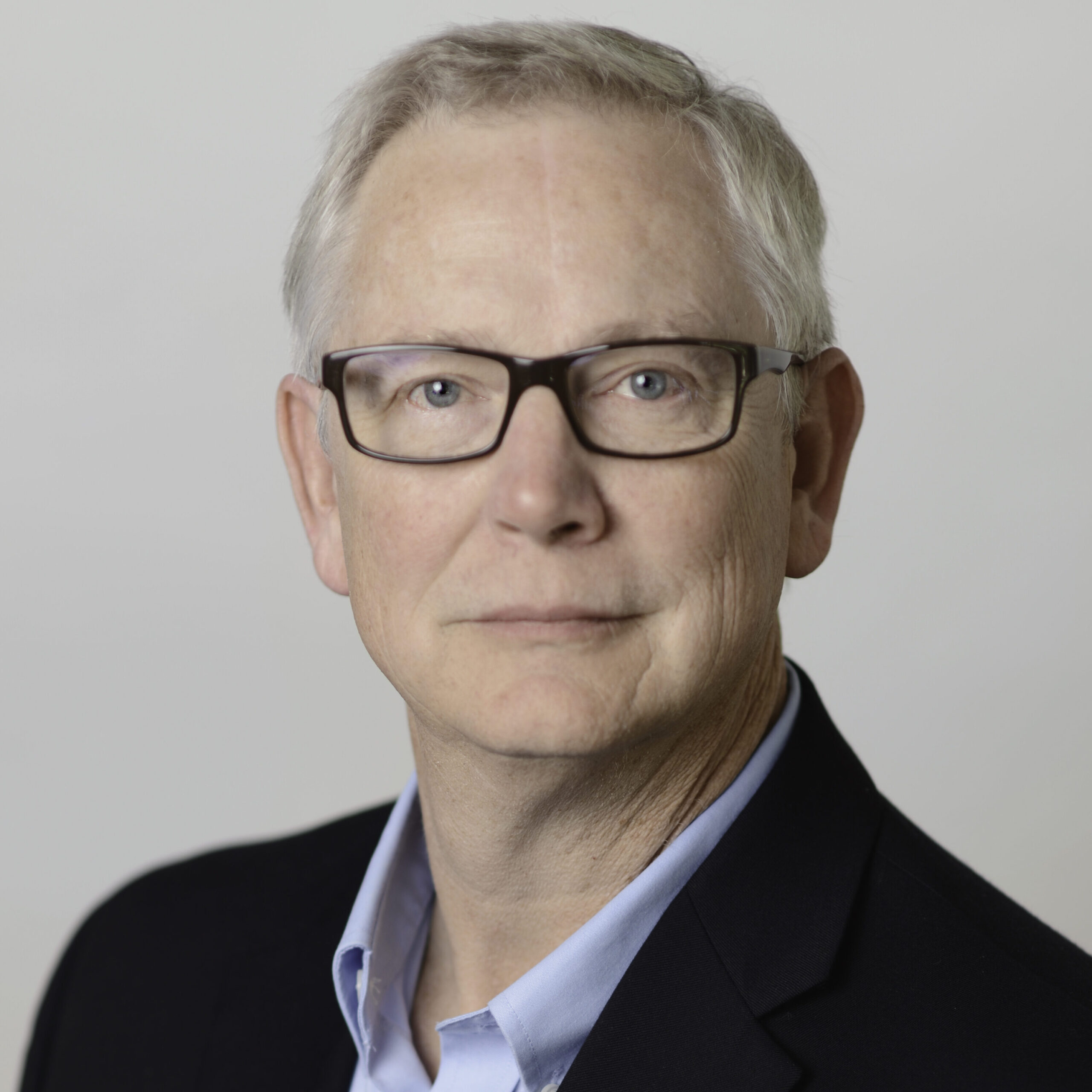Table of contents
ABSTRACT
In this article, 2024-25 ASHRAE President Dennis Knight will discuss the increased demand for HVAC&R and building science professionals with specialized expertise to meet climate targets and commitments. Knight will explore how workforce development strategies, such as advanced education and training, expanding the candidate pool from other professions, and integrated technology and engagement opportunities, are essential for global climate action and sustainability initiatives.
INTRODUCTION
The number of air-conditioners worldwide are expected to triple from about 2 billion systems today to nearly 6 billion in 20501. In addition, the 2017 UN Environment, Global Status Report projects that nearly 230 million square meters (2.5 trillion square feet) of new buildings will be constructed between now and 2060. This is equal to the entire existing building stock which will also need to be renovated or retrofitted to achieve net zero carbon emissions by then. That is a total built environment of nearly 460 billion square meters (5 trillion square feet). The tripling of the number of air-conditioning systems and the doubling of the number of square meters (square feet) of buildings will create an enormous demand for manufacturing, research, building designers, constructors, operators and service and maintenance technicians.
To make the transition from HFCs to lower GWP refrigerants, transition our energy sector, replace fossil fueled heating supplies with heat pumps and create more energy efficient cooling and refrigeration systems, our industry needs PEOPLE. Lots of people. The demand is overwhelming for highly skilled, capable and passionate people, for people who want to make a difference!
THE ISSUE
While the projected growth in the number of air-conditioning systems is good news and future demand will be exceptional, our industry is facing a crisis of its own and that is with our workforce.
The Heating, Ventilating, Air-Conditioning and Refrigeration (HVAC&R) industry, worldwide, needs an expanded workforce that is more diverse and skilled in the latest science and technologies. Yet, the global workforce in these sectors is diminishing.
Senior building engineers, contractors, technicians and building scientists bring a wealth of knowledge and experience to our industry – but the workforce is aging out. Unfortunately, not enough young people are interested in pursuing this essential career path. In addition, we compete with every other industry and profession for highly skilled and capable talent.
We have a perception problem. Part of it is our message about our vision for a sustainable future where buildings are energy efficient, healthy and carbon neutral and our role in that work needs to be clarified!
We all want to be involved in a career that we can be passionate about and where we can find meaning and purpose.
Maybe it comes down to this – we need to demonstrate to the world what we do and the impact that our industry is making today and can produce in the future to address indoor environmental quality, sustainable development and climate change.
If we are going to meet the targets we’ve set and the commitments we’ve made, we first need to understand what we must do to address our workforce crisis.

THE SOLUTIONS
50 years ago, I entered the buildings industry straight out of high school at the age of 18. I was eager to learn and contribute. An engineer from one of the largest power companies in the United States that owned, designed, built and operated some of the biggest power plants in the world visited my high school drafting class when I was just 16. The engineer let me know that a position was waiting for me as soon as I graduated. I took him up on the offer and became a “Power Plant Piping Systems Designer.” That was a fancy term for “draftsperson” back in those days.
What this demonstrates is that the power company was using a “skills first” hiring practice. They were investing in and committed to attracting and retaining people who could do the work that needed to be done to advance their business goals. They began investing in and committing to my personal growth and development almost two years before I graduated from high school. They were starting early, casting a wider net, and accessing a larger pool of potential workforce candidates. They considered all the candidates who were capable of learning the skills they were looking for, whether the candidates was on a traditional or non-traditional path to higher education and career development.
By taking advantage of in-house training, ASHRAE courses, and generous tuition reimbursement programs, I was able to earn a family sustaining salary in an industry with excellent opportunities for career advancement and upward mobility. I went on to earn a degree in Physics, become a registered professional engineer, build a successful consulting engineering practice and become both a business leader and leader in ASHRAE.
This year ASHRAE is focusing on workforce development and taking the lead to develop and disseminate a campaign at the local level among our chapters and members, along with many of our industry partners, government agencies and allied organizations to educate others about our industry’s role and contributions.
We will promote the current work and future opportunities in HVAC&R that will impact indoor environmental quality, climate change and sustainable development for all humanity.
A portion of the campaign will highlight how our industry will have an even more significant impact as the world’s population grows from 8 billion today to 9.7 billion in 2050.
One way we will do that is by sharing new tools and resources that anyone can use to promote the cooling industry and tailor to include their own personal stories, observations, passions, and motivations. These resources will be added to the president’s section of ashrae.org and made available beginning July 1, 2024.
These tools will allow everyone to make a case to students and potential workforce candidates for the rewards of choosing a career in this industry.
Using these tools anyone working in the industry will be able to articulate their “Whys.”
- Why this is a great “CAREER”?
- Why people should be interested in this work?
- Why our field is essential for survival as it commits to protecting our globe?
We can all tell our stories to help grow our workforce.
ASHRAE will also highlight our industry in a way that celebrates the ideas and innovations that emerge when we embrace and encourage greater diversity, equity and inclusion.
As part of this initiative, we are creating new Member Resource Groups (MRGs) within ASHRAE.
MRGs help solve problems and grow interaction between similar sets of ASHRAE members.
Member Resource Groups promote a sense of belonging and enable more efficient networking.
They are not new to ASHRAE. We’ve successfully developed Member Resource Groups such as Young Engineers in ASHRAE, Women in ASHRAE, Student Members and our many technical committees.
The representation within these groups brings different perspectives, experiences and ideas that ultimately advance our industry.
Finally, we are investing in and committing to individual and collective professional development.
Let’s change our thinking about the value of developing people!
Data shows that investing in developing people enhances their loyalty, retention and impact.
We want employees to be motivated, highly productive, innovative and profitable for as long as they stay in our firms.
This initiative aims to develop new programs and modernize our education delivery platforms to provide technical onboarding and training materials for mechanical engineers, contractors, manufacturers, technicians and building scientists.
Powered by ASHRAE’s 130-year reputation within the built environment, we will be a go-to resource for our industry for HVAC&R and building science education to new employees and to maintain and increase the skills of mid-career and more senior-level professionals.

CONCLUSION
Demand for skilled people will be exceptional as we move toward reinventing our entire industry over the next two decades and what it means to provide a safe, healthy, sustainable and carbon neutral built environment for everyone.
Today, rapidly changing technology and Artificial Intelligence (A.I.) are transforming the building science industry and presenting numerous career opportunities.
Advanced automation and AI-driven systems will offer more energy-efficient and intelligent building systems solutions while enhancing comfort and indoor environmental quality.
HVACR and building science professionals can use their skills and leverage these cutting-edge technologies, creating a demand for specialized expertise.
The growing emphasis on sustainability, resilience and resource efficiency in building design and operation opens career opportunities focused on green building technologies and renewable energy integration.
Our work has a direct impact on improving the human condition!
Numerous studies show the link between indoor environmental quality and the health and well-being of building occupants.
New career paths create opportunities to stimulate breakthroughs in sustainability, resilience, health and well-being, human comfort and productivity.
Those who understand these practices and become skilled at implementing them will have plenty of career opportunities.
As technology advances, people of all ages are becoming more accustomed to adapting to new tools and processes.
By strategically leveraging the power of technology alongside the power of human creativity, both experienced professionals AND new talent can collaborate to drive progress within our entire industry.
For those of us who are already working in this industry, our industry needs your help, ASHRAE needs our help, the world needs our help!
Each of us at some point must ask ourselves – what would I like to be remembered for.
As the former President of the United States, John F. Kennedy, once said, “If not us, who? If not now, when,” we’ve got to take the message to the streets everyday of why this industry can provide careers with meaning and purpose to anyone, no matter from where they are starting out, who have the skills, capacity to learn and motivation to make it so.
DO WE WANT TO HAVE AN IMPACT?
DO WE WANT TO MAKE A DIFFERENCE?
WE ARE THE SOLUTION!
We must prepare to engage in conversations and share our stories about how the HVAC&R industry actively creates a sustainable world for everyone.
In her book Fierce Conversations, Susan Scott writes, “Our lives succeed or fail, gradually then suddenly, one conversation at a time. And while no single conversation is guaranteed to change a life, a marriage, [an industry, the world], it can. The conversation is the relationship.”
Let’s start these conversations.
Let’s build these relationships.
Let’s tell our stories.
Share them with parents, teachers, students, colleagues, employees, potential ASHRAE members, even family and friends.
Tell them why this industry is a place that has role models, mentors and collaborators that you want to work with and aspire to be like.

M. Dennis Knight
Footnotes
- IEA (2018), The Future of Cooling, IEA, Paris https://www.iea.org/reports/the-future-of-cooling, Licence: CC BY 4.0 ↩︎
